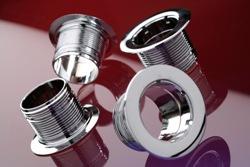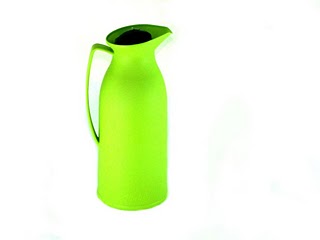ACRYLONITRILE-BUTADIENE-STYRENE (ABS)
ABS is a terpolymer formed from the copolymerization of three monomers: acrylonitrile, butadiene and styrene. First, acrylonitrile is copolymerized with styrene to give SAN, which is extruted together with polybutadiene (butadiene polymerized) forming the ABS.
ABS is a thermoplastic designed for applications requiring good impact resistance and good visual appearance, such as a cell phone: your cover should be attractive to the consumer and at the same time resist the falls. Therefore, it is onde of the most suitable plastics for the manufacture of external parts of appliances.
 Chemical structure of ABS
Chemical structure of ABS
Each monomer provides its properties, which enable the production of different types of ABS for the most varied applications. ABS with a higher content of butadiene is used where high impact resistance is required. ABS with a higher content of acrylonitrile is used where high heat resistance is required, and so on, as shown below:
During processing, the ABS resin is extremely stable, keeping the extrudate product without variations (
espaguetti tapering or bursting, for example) and requiring little or no hold pressure in injection molding, unlike what occurs with polyolefins. Moreover, the stability of the ABS in pelletizing production line exceeds its "mother-resin", the
PS, because the rubber phase of ABS (butadiene) makes it much more flexible to pass between the rollers of the cooling bath and drying equipment.
Features:
- Good mechanical strength
- Good visual appearance
- Easy moldability
- Good impact resistante
- Good tensile strength
- Good hardness
- Metallizable
- Can be blended with other polymers
- Wide range of properties (between types of ABS)
Applications:
External parts of appliances, helmets, grilles and body panels, chrome knobs drawer.
Melting point:
~347°F (~175°C)
Glass transition (Tg):
Elastomeric phase: -99°F (-73°C)
Matrix phase (SAN): 228°F (109°C)
Bibliography:
HARPER, Charles A.; PETRIE, Edward M. Plastics Materials and Process: A Concise Encyclopedia. Hoboken: John Wiley & Sons, Inc., 2003.
WIEBECK, Hélio; HARADA, Júlio. Plásticos de Engenharia: Tecnologia e Aplicações. São Paulo: Artliber Editora, 2005.
© 2010-2025 - Tudo sobre Plásticos.
All rights reserved.
Home
-
Privacy policy
-
Contact










